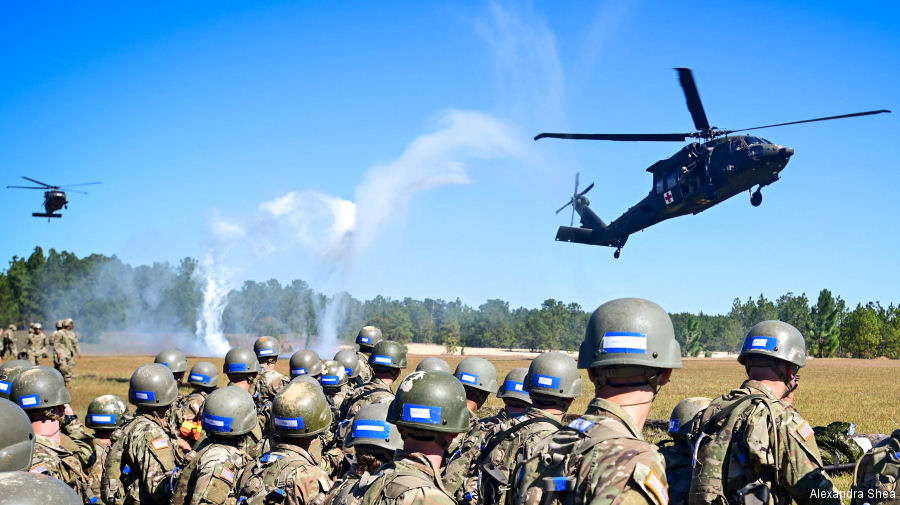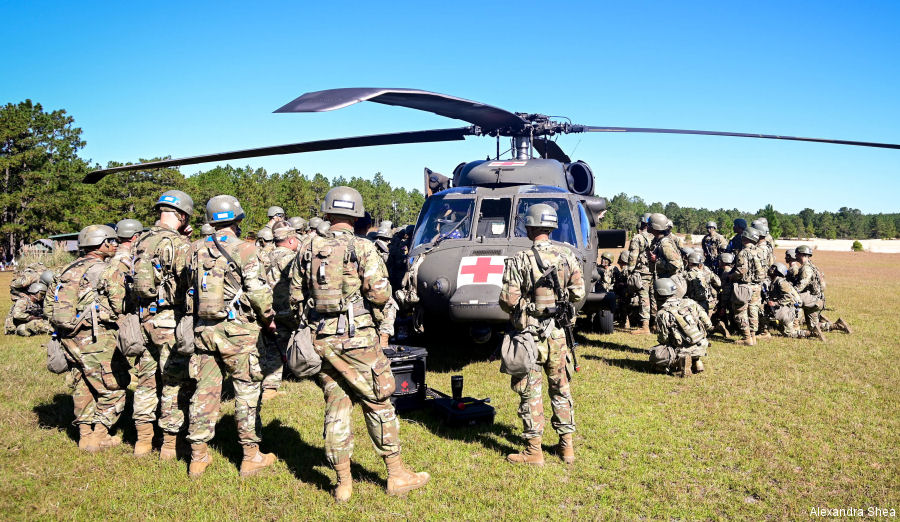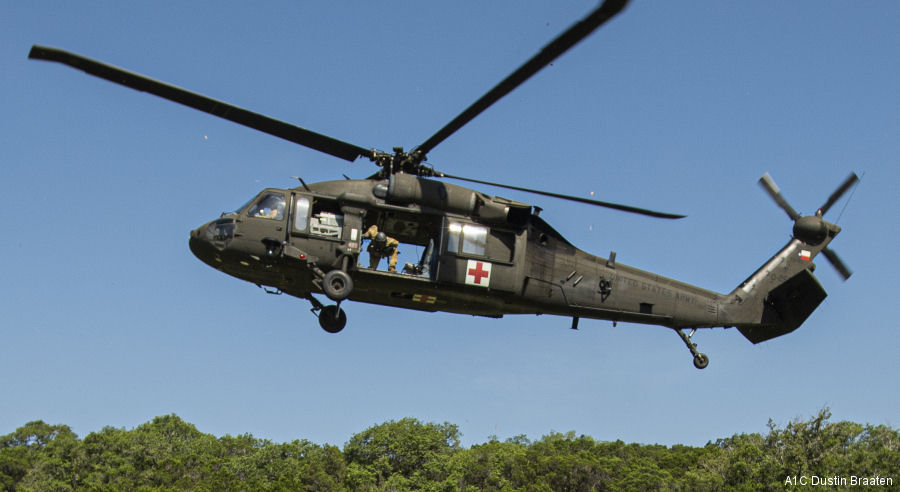
He was shouting to a group of trainees as they were washed in a flash of dead grass and rotor wash as two UH-60 Black Hawk helicopters were touching down mere feet away.
Teams of 10 trainees crouch in the grass, a medical litter lay between them holding a 200-pound mannequin nicknamed Rescue Randy.
They move towards the helicopters in a crouched run, six peel away to pull perimeter security while the remaining four heft Randy into the open side doors.
Minutes later, all crouch run to cover as the helicopters lift off.
These trainees are in the sixth week of their 10 week training cycle and are getting a taste of what combat can look like for the first time.
“This is my first time being this close to a Black Hawk and I’m lovin it,” said Pvt. Anthony Cisneros, Company D, 1st Battalion, 34th Infantry Regiment. “It opened my eyes to know what to do if I was in combat.”
Cisneros helped carry the litter holding Rescue Randy when his team took their turn. Though his military occupational specialty is 91C-Utilities Equipment Repairer, he and his fellow trainees must complete Tactical Combat Casualty Care to graduate from Basic Combat Training at Fort Jackson, South Carolina.
Cisneros also learned how his brigade commander’s life was saved by the same medevac skills he and his battle buddies were learning.
The Green Beret turned brigade commander was shot multiple times during a gun battle in Iraq in 2007.
Tactical Combat Casualty Care
“We were pinned down at the objective. Medics there saved my life, without them I would have died there,” Solheim said. “They moved me under fire to a hot landing zone where birds just like this got me in and back to the Green Zone where I underwent emergency surgery.
“So this is firsthand experience for me. This isn’t just training, this is real. The skills you take here right now could very well lead to you saving your own or someone else’s life.”
While the trauma medical training isn’t new to training cycle planning, the use of Black Hawk helicopters is.
“We coordinated with Hunter Army Airfield to provide aircraft to provide realism,” said Capt. Kyle Lawrence, commander of Company D, 1st Battalion, 34th Infantry Regiment. “To my knowledge, this is the first time this type of exercise with live aircraft has participated in the training at Fort Jackson.”
Lawrence and his company first sergeant coordinated with 2nd Battalion, 3rd General Support Aviation Battalion “Dust-off,” from Hunter Army Airfield located in Savannah, Georgia.
Two Dust-off air crews and Black Hawks flew to Fort Jackson to spend the day talking to trainees about their jobs and procedures on how to transport and load trauma patients into the helicopters. The Black Hawks then lifted off and flew in a large arc returning to the landing zone as drill sergeants threw white smoke grenades to mark the area.
All the trainees were given an opportunity to put their skills to the test as they were deafened by the beat of rotor blades and pelted by flying bits of grass and leaves.
Army Training Center and Fort Jackson Commanding General Brig. Gen. Patrick R. Michaelis stopped by the landing zone to observe the training as well.
“I’m hoping this will provide realism and can give them an introduction to what they might see in a real-world situation,” Lawrence said. “This also a great change of pace for the drill sergeants.”
Lawrence said the planning process for him and 1st Sgt. Erin J. Hammer to coordinate the flight crews and helicopters to fly to Fort Jackson was tedious but worth the work. He added he was thankful to his leadership for helping make the training possible.
“This is a new type of training event but I think it’s one we will be able to replicate again and again,” Solheim said. “The goal is to add these kinds of training enhancers throughout the basic training experience so kudos goes to Capt. Lawrence and 1st Sgt. Hammer for their initiative here.”


Since Huey helicopters arrived in Vietnam, the term “Dustoff” become synonymous with medical evacuation missions, Black Hawk continues the tradition
See also |
2-3 GSAB
Sikorsky HH-60M Black Hawk
Black Hawk in
Joint Emergency Medicine Exercise 2022




